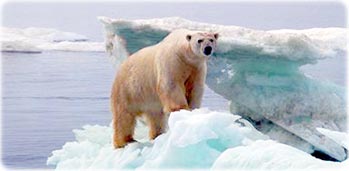
The Arctic Region
The Arctic is the region around the North Pole, usually understood as the area within the Arctic Circle. It includes parts of Russia, Scandinavia, Greenland, Canada, Alaska and the Arctic Ocean.
During winter, the whole area is normally covered by ice and temperature easily reaches -60° C. During summer, the tundra is the main vegetation and, in the warmest parts of the Arctic, shrubs, willow, and birch can be found. Animal life is poor in the number of species. There are, for example, polar bears, arctic foxes and musk oxen. See a map of the Arctic Region.
|
The Eskimos Eskimos are the native population of the Arctic regions of Canada, Greenland, Alaska and Siberia. There are different groups of Eskimos, such as Inuit, Alutiit, Yupik, and Inupiat, living in different regions or speaking different dialects. It is estimated that Eskimos live in the Arctic or sub-Arctic regions for more than 3,000 years. Today the total population of Eskimos is more than 100,000 people. |

Russian Arctic, Bering Sea. Where Asia meets America. During winter, the Bering Sea can be completely frozen. The Bering Strait is a relatively shallow passage of about 30 to 50 meters, in depth.
Dogteams and icebergs in the Northwest Passage, Canada. Since the 16th century, explorers searched for the Northwest Passage to India, the Canadian Arctic lands began to be discovered by these European explorers.
Ice formations in an Iceberg, in the Arctic region (left). A person approaches an iceberg in the Northwest Territories. A region of the Arctic (right).
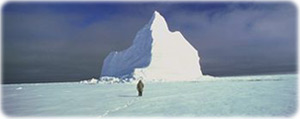
Polar bear drifting on an iceberg, in the Arctic.
Ice construction of an Eskimo.
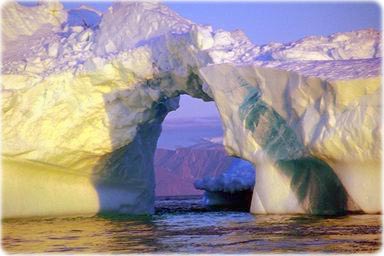
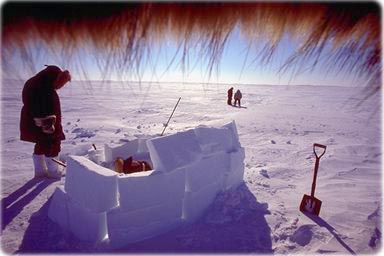
|
Copyright © Geographic Guide - Travel Arctic Region. |

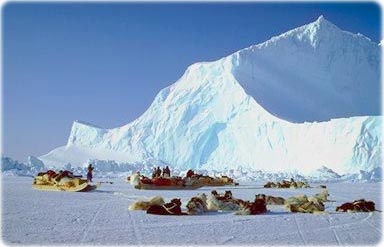
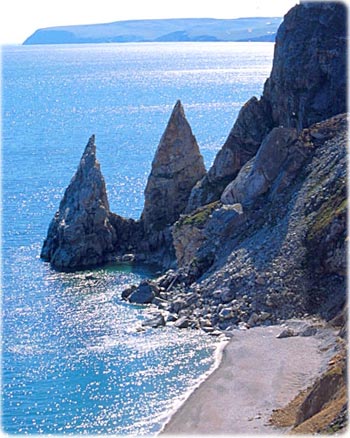
Eskimos in the Arctic Region.
The Arctic Region